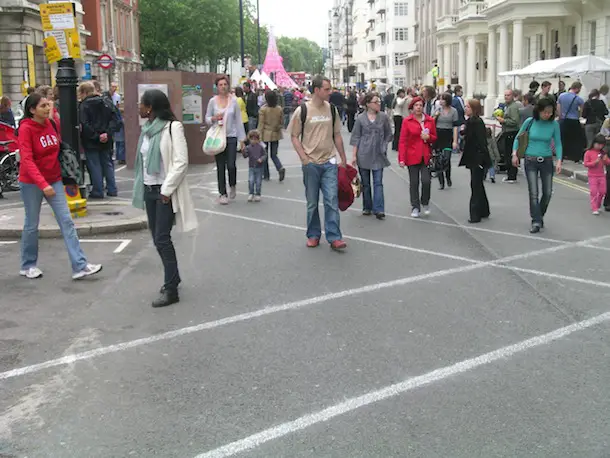I’ve written before about how much I enjoy living in a small home in a walkable neighbourhood. Apparently I am not the only one. Real estate trends, urban planning theorists, and architects in North America are coming to the realization that more and more young people – Generation Y – and even their soon-to-be-empty nest parents, want a smaller home. And not just anywhere, they want it in a walkable community. And most of those Generation Yers don’t even want to own a car!
If you are a relatively young person who grew up in the 80s like me, you probably grew up in the suburbs on a street surrounded by big homes with big driveways and big backyards. Walking to school was a 20-30 minute walk past more big homes with the odd gas station, fast food joint and 7-11 along the way. Other than this walk to school, you spent most of your time in a car. Getting your license was the ultimate ticket to freedom.
If you are like me, you do not look back at this as the ideal lifestyle because – lets face it – no matter how sexy car companies make driving look, it is expensive, boring and stressful.
As an adult, I have no desire to return this lifestyle. Unless I become a farmer (which would be nice but horribly impractical), I do not want a big house surrounded by other big homes.
North American demographics, car buying trends and real estate market research are all converging to prove what the urban planning community has been touting for years: the home of the future is small and in a walkable community.
America’s National Association of Realtors’ 2011 Community Preference Survey found that 58 percent of respondents indicated a preference for “a neighborhood with a mix of houses and stores and other businesses within an easy walk.”
This makes sense considering demographic trends. According to a recent Atlantic Cities article, the two largest generations – the Baby Boomers (born 1946-1964) and Millennials (born 1981-2000) – are reducing the share of total households with children, traditionally the portion of the market most interested in suburban homes with sizeable lots for kids to play in and grownups to maintain. Neither the Millennials with their preference for urban lifestyles nor the empty-nesting Boomers fit that suburban home market to nearly the same degree as their parents did. According to a recent article by Patrick Doherty of the New America Foundation:
Boomers and millennials, the two largest demographic groups in the country, are converging in a time-of-life moment where what they want is smaller homes on smaller lots in walkable, service-rich, transit-oriented communities. Boomers, who have just started turning 65, are empty-nesting and downsizing. Millennials are in the process of getting married and having kids, and according to market surveys, 77 percent simply don’t ever want to go back to the ‘burbs.
We need to build more dense, walkable communities, but what do homes in these communities look like?
Due to limited geography and developers preferences, Vancouver has spent the past 10 years focused entirely on building a walkable, liveable downtown filled with high rise condos. While this worked for downtown, not everyone in the rest of the city wants a one story home in the sky. Some people want a front door, an entrance to the outdoors, a small yard/outdoor space, two stories, not living under someone, etc.
If we build smaller homes, we can still have walkability without relying entirely on condos. There are many options. A recent article by Dan Parolek in Better! Cities & Towns: Missing middle housing: Responding to demand for urban living notes that we need a complete paradigm shift in the way that we design, locate, regulate, and develop homes. As a report by Urban Land Institute states, “it’s a time to rethink and evolve, reinvent and renew.” Missing Middle housing types, such as duplexes, fourplexes, bungalow courts, mansion apartments, and live-work units, are a critical part of the solution.
Vancouver’s new laneway housing initiative is a step in the right direction, but there are several middle housing types that also need to be encouraged to allow more density, affordability and walkability in existing neighbourhoods. My only hope is that Vancouver City Hall, developers and particularly residents continue to embrace these more gentle forms of density in our neighbourhoods so that young families can continue to live in the city. High-rise condo living is not for every one, but few people want a big home any more. Not me. Not Generation Y. Not even our parents.
Jillian Glover is a communications advisor specializing in urban issues. She is a former Vancouver City Planning Commissioner and holds a Master of Urban Studies. She was born and raised in Vancouver.
Photo: iheartcities


